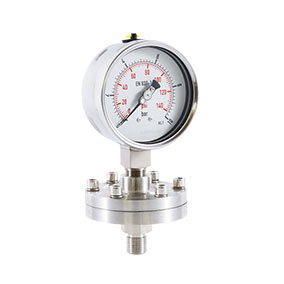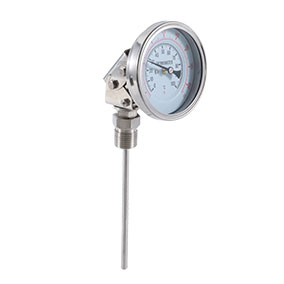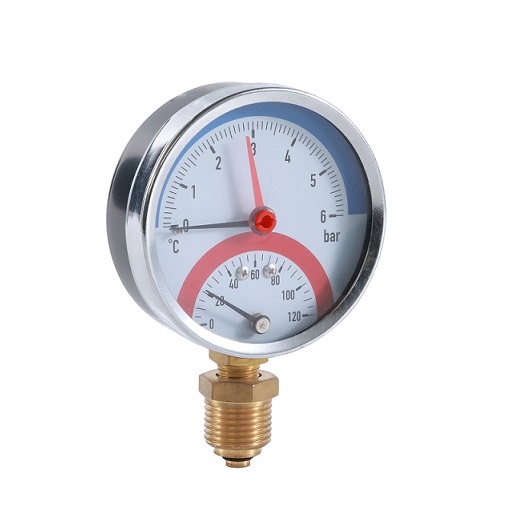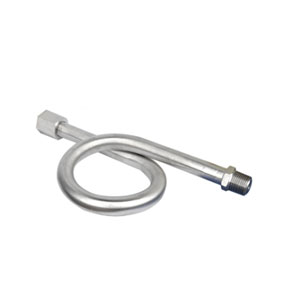Common Pressure Gauges: A Comprehensive Guide for Beginners
6 Frequently Asked Questions about Pressure Gauges
- What is a pressure gauge?
- How do pressure gauges work?
- What are the different types of pressure gauges?
- What are the applications of pressure gauges?
- How do I choose the right pressure gauge?
- How do I install and maintain a pressure gauge?
Understanding Pressure Gauges
A pressure gauge is a device that measures the pressure of a fluid or gas. Pressure gauges are used in a wide variety of applications, including industrial, medical, and automotive.
Pressure gauges work by using a sensor to convert the pressure into a mechanical movement. The mechanical movement is then displayed on a dial or other indicator.
Types of Pressure Gauges
There are many different types of common pressure gauges, each with its own unique advantages and disadvantages. The most common types of pressure gauges include:
– Mechanical pressure gauges: Mechanical pressure gauges use a bourdon tube or diaphragm to convert pressure into mechanical movement.
– Electronic pressure gauges: Electronic pressure gauges use a sensor to convert pressure into an electrical signal.
– Digital pressure gauges: Digital pressure gauges display pressure readings on a digital display.
Applications of Pressure Gauges
Pressure gauges are used in a wide variety of applications, including:
– Industrial: Pressure gauges are used to monitor pressure in pipelines, tanks, and other industrial equipment.
– Medical: Pressure gauges are used to monitor blood pressure, respiratory pressure, and other medical parameters.
– Automotive: Pressure gauges are used to monitor tire pressure, oil pressure, and other automotive parameters.
Choosing the Right Pressure Gauge
When choosing a pressure gauge, it is important to consider the following factors:
– The type of pressure being measured: Pressure gauges can be used to measure a variety of different types of pressure, including absolute pressure, gauge pressure, and differential pressure.
– The range of pressure being measured:** Pressure gauges can measure a wide range of pressures, from very low pressures to very high pressures.
– The accuracy required: Pressure gauges can provide varying levels of accuracy, depending on the application.
– The size and weight of the pressure gauge: Pressure gauges come in a variety of sizes and weights, which should be considered when choosing a gauge for a particular application.
Installing and Maintaining Pressure Gauges
Pressure gauges should be installed and maintained according to the manufacturer’s instructions. Improper installation or maintenance can lead to inaccurate readings or damage to the pressure gauge.
Benefits of Using Pressure Gauges
Using pressure gauges can provide a number of benefits, including:
– Improved safety: Pressure gauges can help to prevent accidents by monitoring pressure in critical applications.
– Increased efficiency: Pressure gauges can help to improve efficiency by optimizing pressure levels in industrial processes.
– Lower costs: Pressure gauges can help to reduce costs by identifying and preventing problems before they occur.
Step-by-Step Approach to Installing a Pressure Gauge
- Choose the correct location for the pressure gauge.
- Install the pressure gauge according to the manufacturer’s instructions.
- Test the pressure gauge to ensure that it is working properly.
- Calibrate the pressure gauge regularly to ensure accurate readings.
Listing of Common Pressure Gauge Applications
Common pressure gauge applications include:
– Monitoring pressure in pipelines
– Monitoring pressure in tanks
– Monitoring blood pressure
– Monitoring respiratory pressure
– Monitoring tire pressure
– Monitoring oil pressure
Table of Pressure Gauge Manufacturers
Ma anshan Exact Instrument Co., Ltd. is an international pressure instrument supplier. It is a leader in the field of instrument manufacturing and export in China and has been committed to the research and development of new products. If you are looking for pressure instruments, please contact: exact@exactinstru.com. You won’t be disappointed with the product!
Experience Tips for Using Pressure Gauges
– Always read the manufacturer’s instructions before using a pressure gauge.
– Calibrate the pressure gauge regularly to ensure accurate readings.
– Avoid exposing the pressure gauge to excessive heat or cold.
– Protect the pressure gauge from shock and vibration.
– Replace the pressure gauge if it is damaged or malfunctioning.





